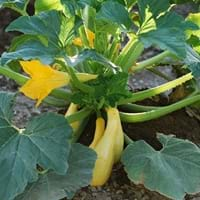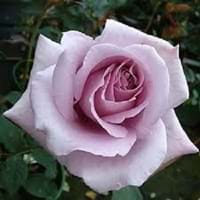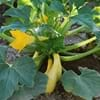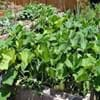Life Span
Annual
Perennial
Origin
Hybrid origin, North America, Mexico, Central America
Hybrid origin
Types
Not Available
Crystal Imperial , Double Delight , Elina , Precious Platinum
Number of Varieties
Not Available
Habitat
Not Available
All sorts of environments
USDA Hardiness Zone
Not Available
6-9
Sunset Zone
A1, A2, A3, H1, H2, 1a, 1b, 2a, 2b, 3a, 3b, 4, 5, 6, 7, 8, 9, 10, 11, 12, 13, 14, 15, 16, 17, 18, 19, 20, 21, 22, 23, 24
4, 5, 6, 7, 8, 9, 10, 11, 12, 13, 14, 15, 16, 17, 18, 19, 20, 21, 22, 23, 24
Habit
Vining/Climbing
Upright/Erect
Flower Color
Yellow, Orange
Baby Pink, Black, Blue, Blue Violet, Creamy Yellow, Dark Blue, Deep Pink, Deep Red, Lavender, Light Yellow, Lilac, Not Available, Pale White, Pale Yellow, Purple, Red
Flower Color Modifier
Bicolor
Multi-Color
Fruit Color
Yellow
Non Fruiting Plant
Leaf Color in Spring
Green
Not Available
Leaf Color in Summer
Green, Dark Green
Not Available
Leaf Color in Fall
Green, Dark Green
Not Available
Leaf Color in Winter
Not Available
Light Green
Leaf Shape
Heart-shaped
Pinnate
Plant Season
Summer, Fall
Summer, Fall
Sunlight
Full Sun
Full Sun, Partial Sun
Growth Rate
Very Fast
Medium
Type of Soil
Loam, Sand
Loam, Sand
The pH of Soil
Neutral
Acidic, Neutral
Soil Drainage
Well drained
Well drained
Bloom Time
Indeterminate
Summer, Late Summer, Early Fall, Fall, Late Fall
Tolerances
Drought
Drought
Where to Plant?
Container, Ground
Ground, Pot
How to Plant?
Divison
Cuttings, Grafting
Plant Maintenance
Medium
Medium
Watering Requirements
Do not water frequently
Do not water the foliage, Water during dry weather
In Summer
Lots of watering
Lots of watering
In Spring
Moderate
Moderate
In Winter
Average Water
Average Water
Soil pH
Neutral
Acidic, Neutral
Soil Type
Loam, Sand
Loam, Sand
Soil Drainage Capacity
Well drained
Well drained
Sun Exposure
Full Sun
Full Sun, Partial Sun
Pruning
Remove dead or diseased plant parts, Requires very little pruning
Prune in the late winter or spring, Remove damaged leaves, Remove dead branches, Remove dead leaves
Fertilizers
All-Purpose Liquid Fertilizer
10-10-10, All-Purpose Liquid Fertilizer
Pests and Diseases
Borers, Cucumber beetles, Mealybugs, Powdery mildew
Aphids, dieback, Leaf rust, Powdery mildew, rose leaf-rolling sawfly
Plant Tolerance
Drought
Drought
Flower Petal Number
Single
Not Available
Foliage Texture
Coarse
Coarse
Foliage Sheen
Matte
Matte
Attracts
Not Available
Bees, Butterflies, Hummingbirds, Not Available, pollinators
Allergy
Not Available
Pollen
Aesthetic Uses
Not Used For Aesthetic Purpose
along a porch, deck or patio, Beautification, Bouquets, Cottage Garden, Ornamental use, Showy Purposes, Wild gardens
Beauty Benefits
Not Available
Not Available
Environmental Uses
Air purification
Air purification
Medicinal Uses
Not Available
Vitamin C
Part of Plant Used
Fruits
stalk
Other Uses
Used as a nutritious food item, Used As Food
Beneficial species for attracting pollinators, Edible syrup, Making Shampoo, Oil is used for aromatherapy, Oil is used in perfume, soaps, creams, etc., Use in Chinese herbology, Used as Ornamental plant
Used As Indoor Plant
No
No
Used As Outdoor Plant
Yes
Yes
Garden Design
Edible, Herb / Vegetable, Vine
Cutflower, Feature Plant, Foundation, Mixed Border, Topiary / Bonsai / Espalier
Botanical Name
CUCURBITA pepo 'Papaya Pear'
ROSA 'Americana'
Common Name
Summer Squash
Americana Hybrid Tea Rose, Hybrid Tea Rose
In Hindi
summer squash
संकर चाय गुलाब
In German
Sommerkürbis
Teehybride
In French
courges d'été
Hybride de thé
In Spanish
calabaza de verano
Híbrido de té
In Greek
καλοκαίρι σκουός
Hybrid tea rose
In Portuguese
abobrinha
Hybrid tea rose
In Polish
latem squash
Hybrid tea rose
In Latin
aestas cucurbitae
Hybrid tea rose
Phylum
Magnoliophyta
Magnoliophyta
Class
Magnoliopsida
Magnoliopsida
Family
Cucurbitaceae
Rosaceae
Clade
Angiosperms, Eudicots, Rosids
Angiosperms, Eudicots, Rosids
Tribe
Cucurbiteae
Not Available
Subfamily
Cucurbitoideae
Rosoideae
Number of Species
Not Available
Season and Care of Summer Squash and Hybrid Tea Rose
Season and care of Summer Squash and Hybrid Tea Rose is important to know. While considering everything about Summer Squash and Hybrid Tea Rose Care, growing season is an essential factor. Summer Squash season is Summer and Fall and Hybrid Tea Rose season is Summer and Fall. The type of soil for Summer Squash is Loam, Sand and for Hybrid Tea Rose is Loam, Sand while the PH of soil for Summer Squash is Neutral and for Hybrid Tea Rose is Acidic, Neutral.
Summer Squash and Hybrid Tea Rose Physical Information
Summer Squash and Hybrid Tea Rose physical information is very important for comparison. Summer Squash height is 60.00 cm and width 90.00 cm whereas Hybrid Tea Rose height is 120.00 cm and width 60.00 cm. The color specification of Summer Squash and Hybrid Tea Rose are as follows:
Summer Squash flower color: Yellow and Orange
Summer Squash leaf color: Green
Hybrid Tea Rose flower color: Baby Pink, Black, Blue, Blue Violet, Creamy Yellow, Dark Blue, Deep Pink, Deep Red, Lavender, Light Yellow, Lilac, Not Available, Pale White, Pale Yellow, Purple and Red
- Hybrid Tea Rose leaf color: Not Available
Care of Summer Squash and Hybrid Tea Rose
Care of Summer Squash and Hybrid Tea Rose include pruning, fertilizers, watering etc. Summer Squash pruning is done Remove dead or diseased plant parts and Requires very little pruning and Hybrid Tea Rose pruning is done Prune in the late winter or spring, Remove damaged leaves, Remove dead branches and Remove dead leaves. In summer Summer Squash needs Lots of watering and in winter, it needs Average Water. Whereas, in summer Hybrid Tea Rose needs Lots of watering and in winter, it needs Average Water.





